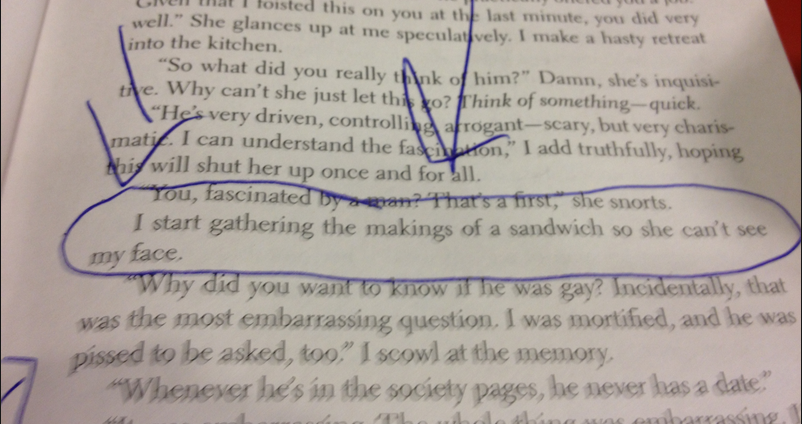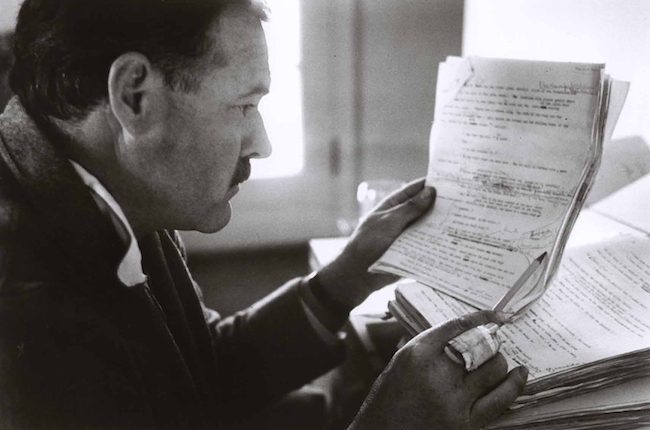Sneak Past Writer’s Block With These 3 Foolproof Techniques
Everyone on Earth has brilliant, original ideas several times a day. You’re brainstorming all the time, without even trying. Look at you go!
The problem, of course, is that your best ideas never make it onto the page. So before we go any further —
Here’s the number one way to write amazing content:
Make writing a part of your daily routine. Write a little something after every meal, or every time you run to the bathroom — it works wonders. I’m not kidding. Or write down the day’s thoughts just before bed.
Form positive associations with writing. Take a hot bath afterward, or indulge in some ice cream, or sip a mug of fresh-brewed coffee. Listen to beautiful music while you write. Infuse the practice of writing into the rhythm of your life.

Or hey, write in a hot bath, like Writing in the bath, Dalton Trumbo (Bryan Cranston).
But even when you’re writing every day — and in case I wasn’t clear, that’s exactly what you need to do — you’re going to hit a snag every now and then. Writer’s block is a beast, and you need to know how to deal with it. So let me drop some knowledge on you.
You can’t overcome writer’s block by fighting it head on.
Instead, you have to sneak past it.
Here’s how to do that.
1. Write the worst sentence you possibly can
A blank page can be one of the most terrifying things on Earth. Its silent emptiness rings with a challenge: What do you want to talk about? How do you start? What if it’s not good enough?
Herman Melville, who wrote Moby Dick, had good reason for calling white the most horrific color in the world. If your page’s whiteness gets inside your head, it’ll take you down before you even get started.
So never give it the chance.
Without hesitation, type the stupidest, most insane sentence you can come up with. Right now. Do it.
Look at that! Now you’ve got one sentence. You’re no longer staring at a blank page.

Judging by this sentence, the author of “Fifty Shades of Grey” seems to have followed my advice to write the worst line imaginable.
Believe it or not, the hard part’s done. Everything after this is academic. You have looked the whiteness in the eye, and you have emerged victorious. Score one for the writer.
I’ve used this technique more times than I can count, and it always gets my engine running. When you’re struggling to get words on the page, your worst enemy is your own inner critic.
Your inner critic works long hours, picking apart most of the sentences you read every day, telling you everything’s wrong with them. And that’s fantastic, because that’s precisely what your inner critic is supposed to do. Go inner critic!
Still, to be a writer, you’ve got to distract your inner critic for a minute. That’s why you write the worst sentence you possibly can: because your critic has no idea what to do with that goal. It gets confused.
And while it’s flailing around, you sneak right on past, into the land of creativity.
2. Imagine you’re writing messages to your friends
Strangely enough, nobody who struggles with writer’s block seems to have any trouble sending messages to people they love.
Why is that? Well, obviously, texting isn’t “creative writing.” It’s just talking.
It follows, then, that as long as you treat the blank page like a conversation, your writer’s block will stop bothering you.

These writers may look like they’re just texting… but looks can be deceiving.
Think of that one friend. We’ve all got that one friend; you know the one I mean — the one who always understands what you’re getting at, even when you don’t explain it properly.
Explain your topic as if you were texting that friend.
Don’t send the messages, obviously. Just type them on the page, as if you’re going to send them later. Once you get into the flow of the conversation, you’ll start to imagine your friend’s comments and questions along the way. Work ‘em in. Respond to objections. Keep the explanation rolling.
What you’ll end up with, after a few minutes of this, is a page of disorganized rambling. Stay calm — this is exactly the result you want. You’ll clean it up later, in the editing stage. For now, remember why you’re here.
All the time you were explaining this stuff to your friend, your writer’s block was nowhere to be found. Mission accomplished.
3. Use your favorite stories as writing prompts
When the novelist Ernest Hemingway (author of The Old Man and the Sea) was a young aspiring author, he set himself a strange project: he retyped several of his favorite books, word for word.
Why did he do this?
Well, he reasoned, if you want to become a great skier, you go ski the same hills as the pros. So to become a great writer, you write the same books as the masters.

Ernest Hemingway said to start by writing the truest sentence you know. But it’s often more effective to write the silliest sentence you can think of.
You, however, do not have to type a whole novel — unless you aim to write one. In fact, you don’t have to type anything word for word. Instead —
Find interesting articles about the topic you want to cover. Then ask yourself, “How would I tell this story differently?”
Retell the same sequence of events, but focus on different elements. Re-explain the same concept using unexpected examples and analogies. Try switching up the order, or arguing from the opposite perspective. Make it your own.
You’re not really “writing” here — you’re just rephrasing something that’s already been written. So your writer’s block will get out of the way.
And yet, when you’re done rephrasing, you’ll find that the end result contains some ideas that weren’t there before.
Now that’s funny! Where did those ideas come from?
Well, they’re all yours now.
Want more insight into your content creation process?
That’s exactly why we’re here.
Schedule your free consultation now.

A 15-year veteran of the journalism and media industries, Ben loves to energize audiences about the frontiers of science, culture and technology — and the ways all these come together.


 (323) 904-8463
(323) 904-8463
